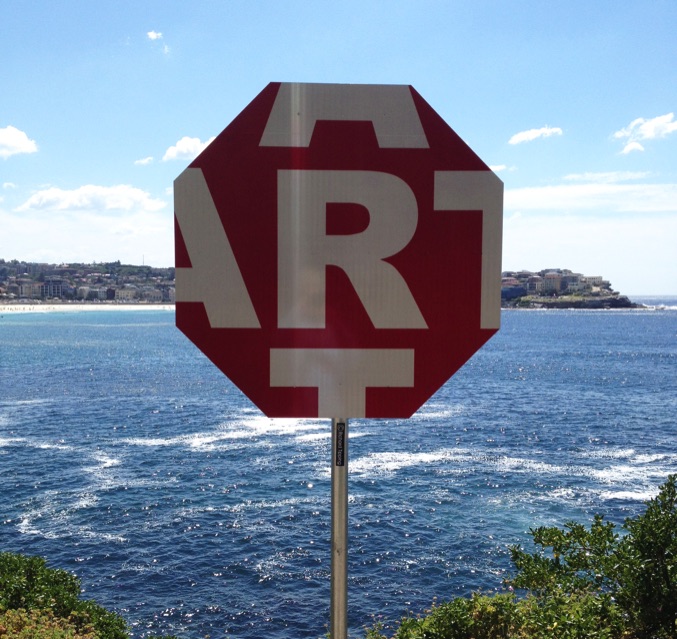
stOP stART © Richard Tipping 2012-13 at Sculpture by the Sea, Bondi, Sydney 2012
Artist Statement
In Start, art can’t be contained, it’s always breaking through (even its own) imposed boundaries. And yet the containment of the form allows the content to swell and dwell within the limitation.
As Jean Dubuffet said: “Art does not lie down in the bed that is made for it; it runs away as soon as soon as one says its name; it loves to be incognito; its best moments are when it forgets what it is called.”
(Attributed from a posthumous publication, Alan Magee: Paintings, Sculpture, Graphics. Forum Gallery, New York, 2004, according to Wikipedia)
Background note
In 1998 I made a stop sign with GO instead of STOP. This was exhibited at Sculpture by the Sea, Bondi, in 1998 and in the same year in a solo show at Ubu Gallery in New York where it was mentioned in a positive review in the New York Times. Since then, GO (stop go) has become a meme - and in 2013 became the front cover and title of a book by a New York designer without any acknowledgement. Upon enquiry, the publisher responded that their author had simply "found it on the net". The fact that GO was exhibited as a full-size refelctive sign in Sydney, London, New York and Munich, and published as an octagonal-shaped sticker widely distributed in four counries, apparently counts for nothing.
In 2012 Stuart Purves of Australian Galleries gave me an enamel badge which he’d bought at the Brooklyn art gallery, which was a stop sign with ART instead.
I found this message deeply depressing. While a possible interpretation is “stop here for art” the obvious meaning of this mix of template and text is “stop art”. The internationally recognised effect of the red octagon is to demand an immediate and complete STOP. In many countries the word ‘stop’ appears in the local language to reinforce this graphic message. Advertisements for creams to help acne commonly feature a stop sign with ACNE written instead of 'stop'.
Similarly, the stop sign with LOVE written on it, available in some Australian art museum shops, is deeply unsatisfactory in semiotic terms. The sales pitch relies upon a song's line: "Stop in the name of love", which may explain it's apparent popularity as a bedroom decoration.
(c) Richard Tipping All text and images are copyright and protected by international legislation. See the Copyright page for more information. For permission to use any of these materials please see Contact page
